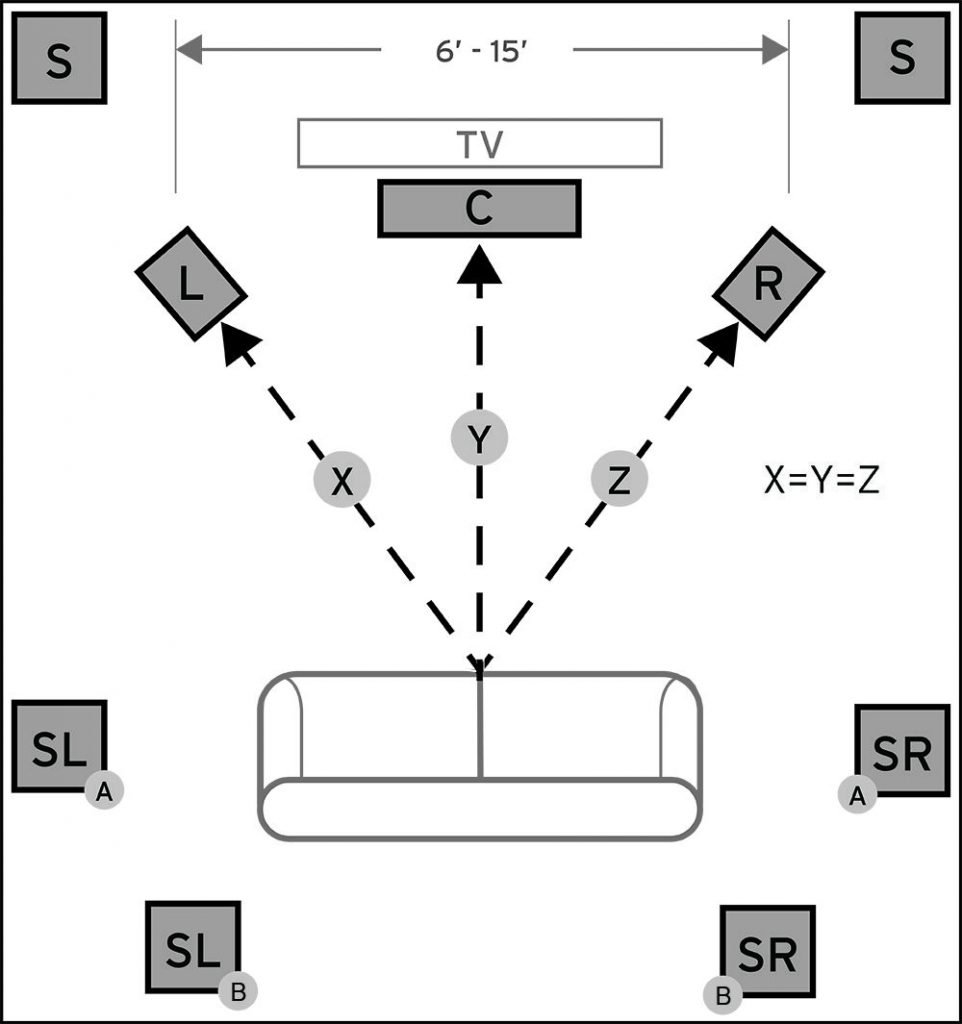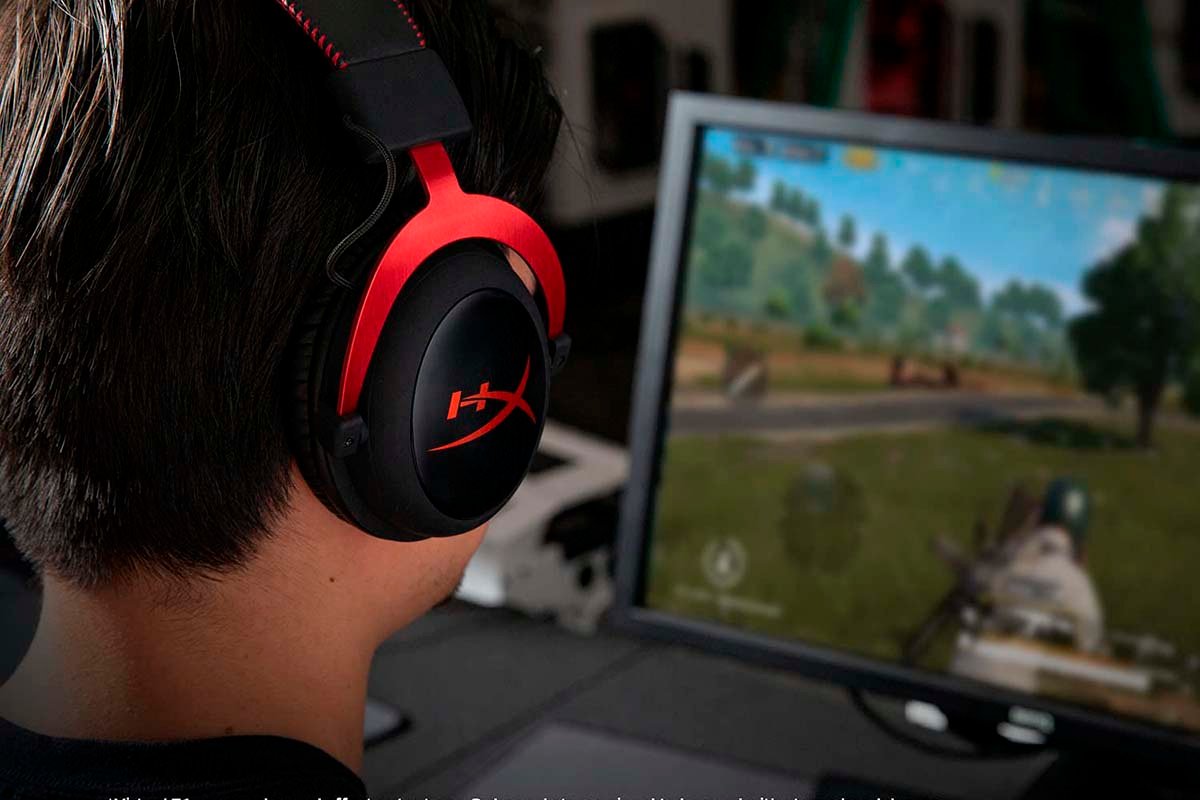When buying a new headset or upgrading your speaker system, there can be many options and must-haves that the choice is tough to make.
Sound is an integral part of the viewing or gaming experience, so is 7.1 surround sound better than the others?
7.1 surround sound is a more immersive, precise way to broadcast sound that will make your gaming experience better. As long as your setup is good and the game is 7.1 surround sound compatible, it would help if you always went for 7.1 over the options like stereo.
I’ll take you through precisely what 7.1 surround sound is and the alternatives available.
We’ll look at the benefits it brings to gaming and some downsides that are important to be aware of for the best sound experience.
Page Contents
What Is Stereo Sound and Surround Sound?

There are two main types of sound setups, stereo and surround. The various configurations are differentiated by number.
Stereo is also known as 2.0, while surround sound comes in various configurations, the most popular being 5.1 and 7.1.
The number refers to the number of channels, which in effect is the number of speakers. The numbers after the decimal point denote a subwoofer, which is why it’s almost always one.
However this can go up to two or more, especially considering cinema layouts.
Stereo is the classic configuration, involving two sources of audio channels, which are designated left and right.
One of the most common iterations is headphones, but any two speakers can be stereo if playing from the same source. Its designation is 2.0.
Once the number of channels increases, you start seeing configurations referred to under the umbrella of surround sound.
By adding additional channels and placing speakers behind, to the side, and other locations, a 3D or surround sound effect is created.
While there are many configurations of surround sound, there are standard setups that you will commonly see. These are referred to as 5.1 and 7.1 surround sound. However as channels are not limited to physical speakers, you can have 7.1 surround sound in headphones too.
5.1 involves five channels and an LFE or low-frequency effect, which is the subwoofer. Typically it will include speakers at the front left, front right, rear or surround left, and surround right, finishing off with a center channel.
7.1 has additional channels, and so involves more speakers than a 5.1 setup. The usual spot for these extra two channels is a different set of rear speakers.
The 5.1 surround speakers are already a part of a 7.1 setup, so the additional speakers are more for the rear sides.
This concept has been put into headphones as well. Inside 7.1 headphones, there are multiple speakers positioned to aim their sound at different angles.
Not all 7.1 headphones have multiple speakers as software can simulate a 7.1 sound out of stereo headphones.
It is also possible to buy sound cards that enable 7.1 sound. These are external sound cards, which means they plug in via USB. One excellent option is Vantec’s USB 7.1 product called the Vantec NBA-200U from Amazon.com.
You can plug an external sound card like the Vantec NBA-200U USB External 7.1 Channel Audio Adapter (Black) into your PC or console, and it can give you better sound quality.
If you are currently using the mono or stereo output for gaming, an external sound card will take advantage of all your 7.1 speakers.
For the more tech-savvy, there is also an option to purchase an internal sound card.
These go into the PCIe slot on your PC, and then you disable your onboard sound card and select the Creative Sound Blaster Audigy from Amazon.com as your primary device.
Amazon sells many headphones that are capable of 7.1 surround sound. These headphones will always make it a selling point that they can do 7.1 sound; for example, HyperX’s Cloud II from Amazon.com headset is highly rated as a great 7.1 headset.
What Are the Benefits of 7.1 Surround Sound?
Surround sound, in general, has been improving as technology improves. It has also highlighted that just adding more speakers does not necessarily improve the sound experience.
In effect, to get the most out of 7.1 sound, the audio source must be properly mixed.

With appropriate mixing, surround sound will always feel more immersive than the standard stereo sound. This is particularly the case with the trend of object-based surround sound.
Object-based surround sound attempts to fix the issue of sound not matching the action you see on screen.
This change from the older systems is noticeable when you have some sound on the right of the screen, like an explosion, being blasted through every speaker on the right.
This can be jarring, as the visuals on the screen show the explosion in front of you, but speakers behind you are playing the sound.
Object-based surround sound gives audio engineers more leeway to pick specific channels to output sound over. This means that the explosion sound is not coming out of every speaker on the right, but only those speakers at the front right.
Is 7.1 Surround Sound Good for Gaming?

It is important to be aware that not all products that boast 7.1 capabilities are the same. As noted above, headphones, in particular, may be marketed as 7.1 surround sound, but this is merely simulated using a software solution.
This type of sound is often referred to as 3D sound to differentiate it from surround sound. This can become an issue because not all devices support 3D sound, and not all media is mixed for 3D sound.
However, if the media and hardware you are using support 7.1 surround sound, this is likely better than other options.
Authentic surround sound can help you tell exactly where objects are located, meaning you can hear an enemy’s exact location or tell where noise is coming from.
More accurate sounds in a game will give you certain advantages. This can include knowing the location of certain sounds, helping hear where gunshots came from, or what the next objective is.
Aside from the competitive aspect, high-level surround sound also increases the immersion of media. Immersion can help bring something to life or make it feel more realistic by increasing the richness of the experience.
This means for certain types of media, such as Virtual Reality or story-rich games, more immersive experiences as enabled by sound will be better.
Downsides of 7.1 Surround Sound for Gaming
More speakers do not necessarily mean a better sound experience. Ensuring that the speakers are correctly configured is vital to take advantage of the different channels.
Another issue is that you must take the acoustics of the room into account. The most expensive speakers alone will not give a good surround sound experience.
Wrong positioning of speakers can result in echoes or feedback, feeding your senses false information about sound origin.
For software-based 7.1 sound, there have been reports of some manufacturer’s software blurring audio channels together, making it hard to tell the direction of the sound.
Surround sound audio also requires some specialist audio engineering to ensure it is adequately mixed. If the media you’re playing, be it a game or movie, is not mixed correctly to surround sound, it will not sound good no matter what surround speaker setup you have.
This means that older media is unlikely to take advantage of any surround sound.
Conclusion
7.1 surround sound can offer an immersive surround sound experience that is hard to beat. It gives more options for positional sound so that you can effectively use the information coming in through your ears to locate precisely where sound is coming from.
This can give you significant advantages in some games or provide a much more accurate overall sound quality.
However, setting a game to 7.1 sound or just purchasing a 7.1 surround sound-enabled headset is not enough to get the whole experience.
3D sound is often sold as 7.1 sound, but the results may be quite disappointing due to the algorithms processing the sounds.

